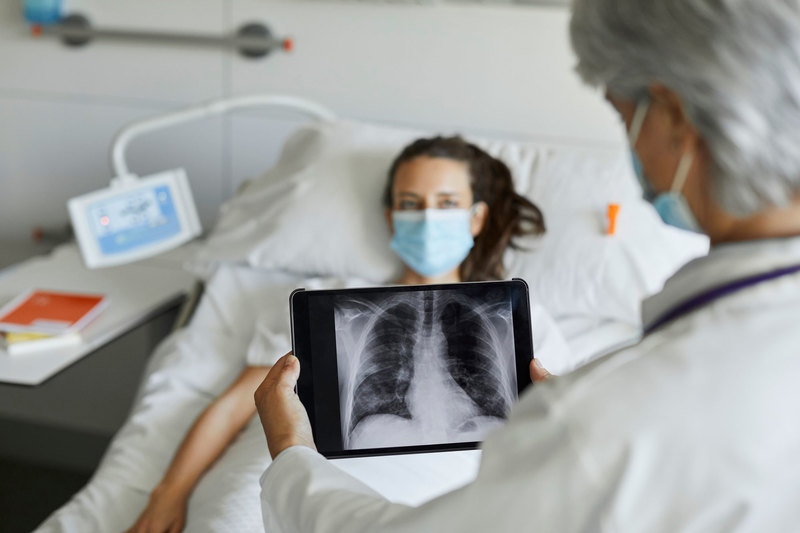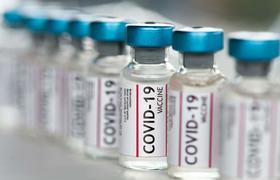Interpreting chronic COVID-19 lung complications
04 March 2021 | Story Niémah Davids. Read time 6 min.
The lungs are one of the organs hardest hit by COVID-19, and in some cases the effects of the disease remain long after the patient has recovered. The University of Cape Town’s (UCT) Professor Keertan Dheda discusses long COVID and its impact on the lungs.
Long COVID is characterised by the long-lasting side effects of COVID-19, which negatively impact a patient’s quality of life post recovery. According to Professor Dheda, the head of UCT’s Centre for Lung Infection and Immunity (CLII), roughly 5–10% of hospitalised COVID-19 survivors experience chronic complications.
Long COVID affects the lungs, the cardiovascular system, the brain and other organs. It can also be associated with anxiety, lethargy and cognitive impairments.
UCT News asked Dheda to unpack the subject in detail.

A viral attack
SARS-CoV-2 attacks the cells located at the back of the nose and throat, as well as the lining of the alveoli – tiny air sacs in your lungs that take up the oxygen you breathe in; they are the ‘workhorses’ of the respiratory system. Dheda said that each alveolus is covered with a network of tiny blood vessels that allow oxygen to pass from the air sac into the bloodstream. Together, the alveoli and the network of tiny blood vessels are known as the alveolar–capillary unit.
As a result of inflammation, damage to the cells and a build-up of fluid in the alveoli, oxygen is prevented from effectively passing into the bloodstream.
“Effectively, this is what constitutes [COVID-19] pneumonia, which may also be accompanied by a layer of cell debris and other material that line the inside of the air sacs.”
“Effectively, this is what constitutes [COVID-19] pneumonia, which may also be accompanied by a layer of cell debris and other material that line the inside of the air sacs. This further subverts the transfer of oxygen into the bloodstream,” Dheda said.
This, he added, results in a distinctive type of pneumonia referred to by clinicians as diffuse alveolar damage and occurs in patients with severe COVID-19.
Fluid build-up
According to Dheda, inflamed and damaged cells, and a build-up of fluid in the alveoli, affect thousands, sometimes millions, of alveolar–capillary units. This, he explained, contributes to variable disease severity, but it depends on a number of factors, including pre-existing lung disease, age, smoking status, comorbidities and the background genetics of the patient.
In severe COVID-19 cases the lungs become swollen, heavy and inflamed and are unable to expand easily. This increases the work of breathing and results in insufficient transport of oxygen into the bloodstream. As oxygen levels drop to a critically low level in the blood, many organs, including the brain, may lose their functionality.
“Treatment with high concentrations of oxygen, together with anti-inflammatory medication, is often an essential part of therapy in those patients with symptomatic [COVID-19] pneumonia,” Dheda said.
Long-term complications
In a handful of patients who have recovered from COVID-19 pneumonia, long-term complications may set in. These can be divided into three categories:
- Organising pneumonia: Days or weeks after the patient has partially or fully recovered from viral pneumonia, a second bout occurs. This is often caused by an abhorrent healing response, where the immune system causes damage to the alveolar–capillary units. This type of pneumonia is treated with anti-inflammatory drugs.
- Chronic breathlessness as a result of scarring to the lungs: In some extensive cases this necessitates long-term oxygen therapy at home. The formation of blood clots in the lungs’ small blood vessels can further complicate matters and increase the need for home-based oxygen support.
- Dysfunctional breathing: This condition causes breathlessness and unsynchronised breathing. It is not yet well understood, but it is likely related to the dysfunction in the neuroepithelial [cell] pathways (the stem cells of the central nervous system) associated with sensing and coordinating breathing.
“Patients who were admitted to the ICU and who were placed on breathing machines may also end up with post-ICU syndrome. This is a post-traumatic stress disorder and causes anxiety, muscle weakness and uncoordinated movement. It may contribute to both respiratory and general disability,” he said.
Telltale signs
Dheda said that there are a few telltale signs of long COVID to look out for – breathlessness is the main symptom. Other signs include a patient’s inability to easily climb stairs, perform daily tasks around the house and get enough air into the lungs while breathing.
“Some types of post-COVID-19 lung disorders are treatable, and patients usually recover fully.”
“Some types of post-COVID-19 lung disorders are treatable, and patients usually recover fully. Other manifestations, especially in the case of post-pneumonic scarring, may result in long-term disability that requires pulmonary rehabilitation and even long-term oxygen therapy,” he said.
Dheda said that the CLII has launched a formal research programme that involves studying long-term COVID-19 complications. A sizeable number of patients who have recovered from the virus have committed to participate. He said that researchers study imaging characteristics, lung and heart function, as well as immunological and genetic studies to further understand long COVID and its complications.
The results of this study will be published as soon as they are available.
“Interpreting chronic COVID-19 lung complications” is the first in a series of articles dedicated to long COVID that will be published on UCT News in the coming weeks.
 This work is licensed under a Creative Commons Attribution-NoDerivatives 4.0 International License.
This work is licensed under a Creative Commons Attribution-NoDerivatives 4.0 International License.
Please view the republishing articles page for more information.










